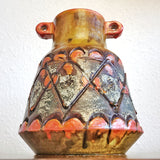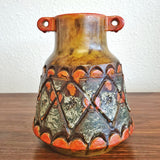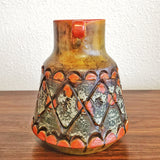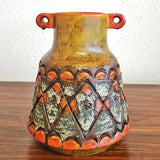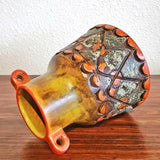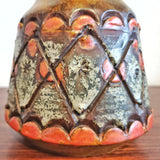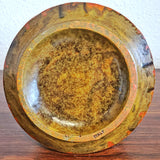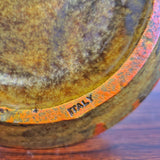
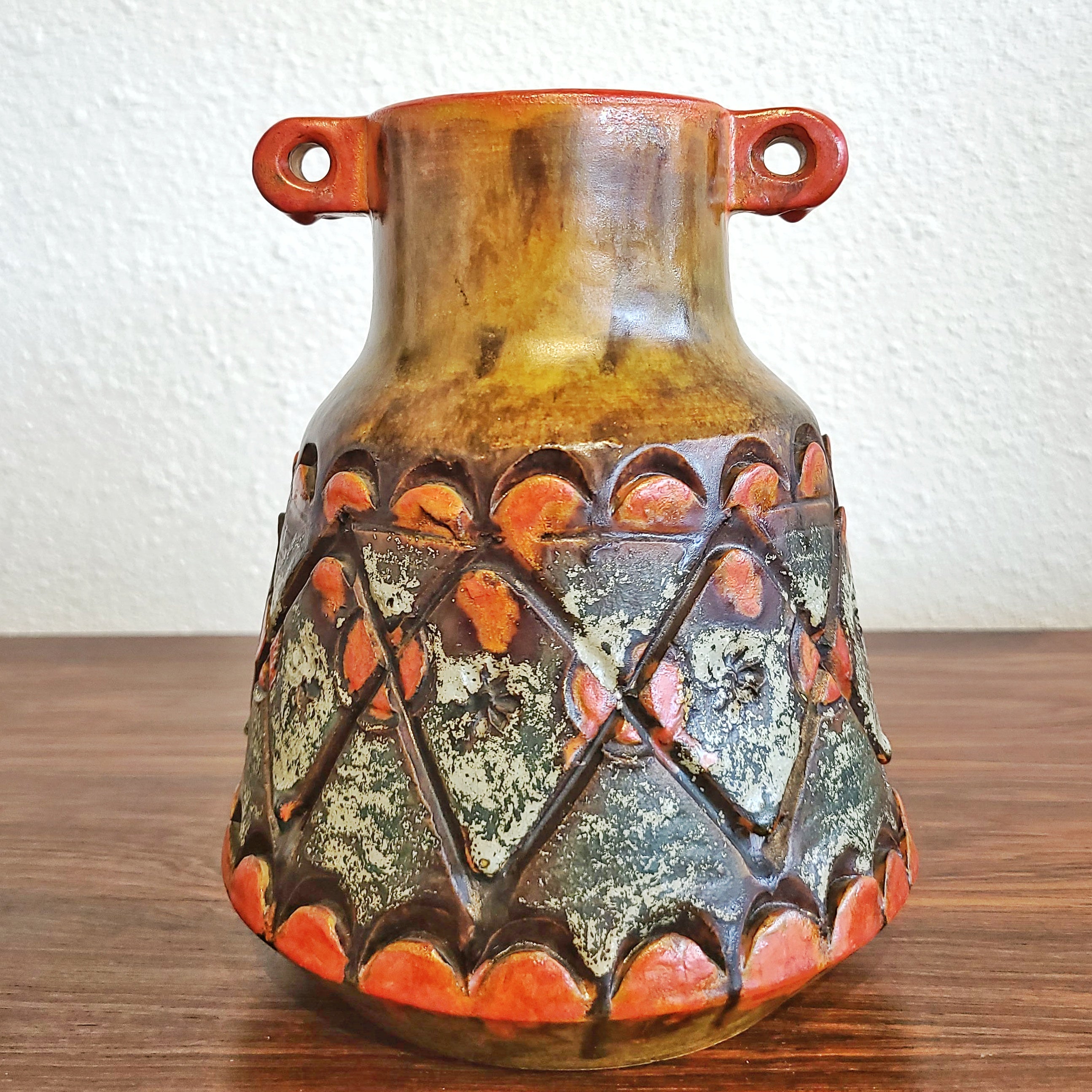

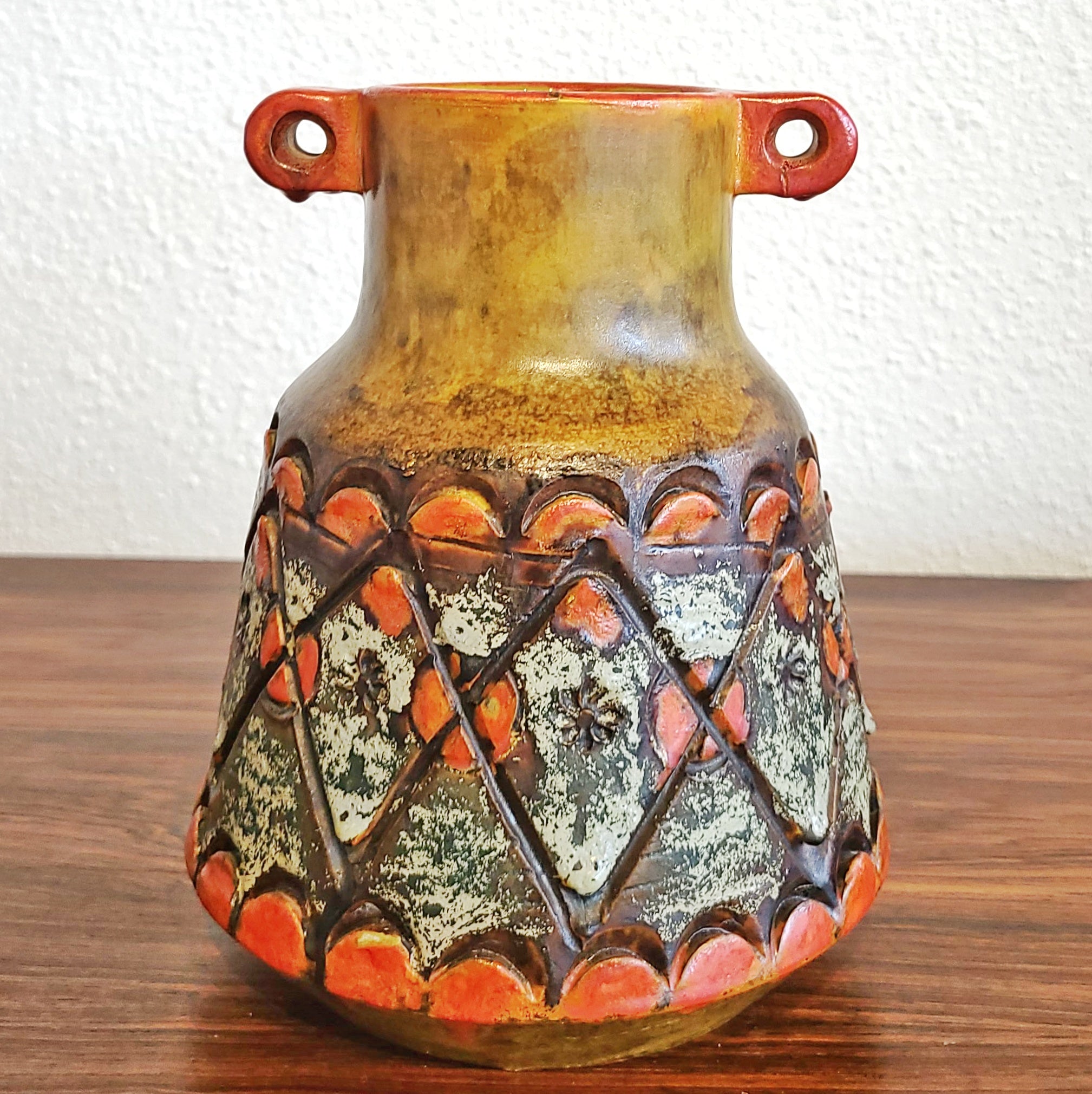
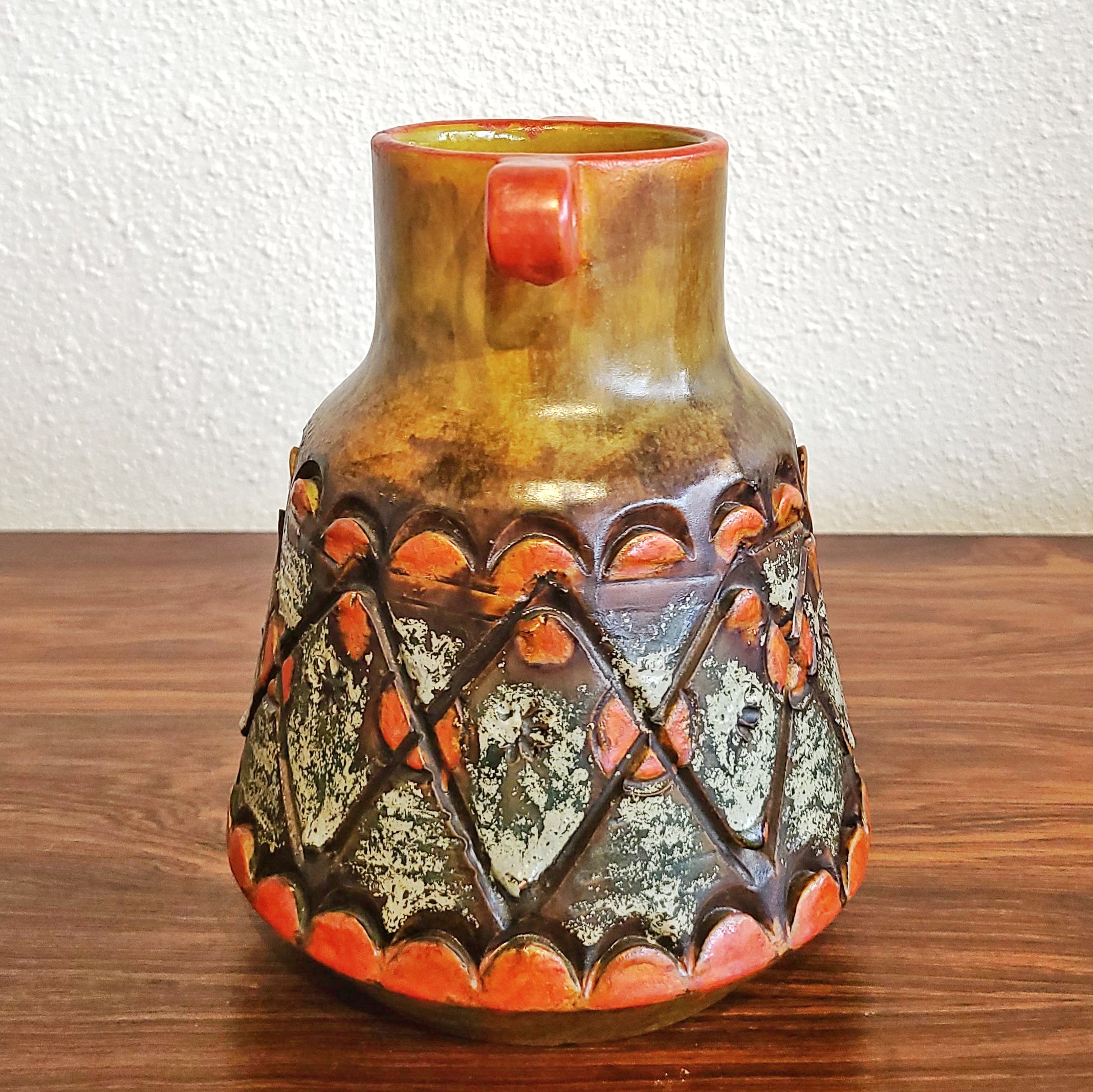
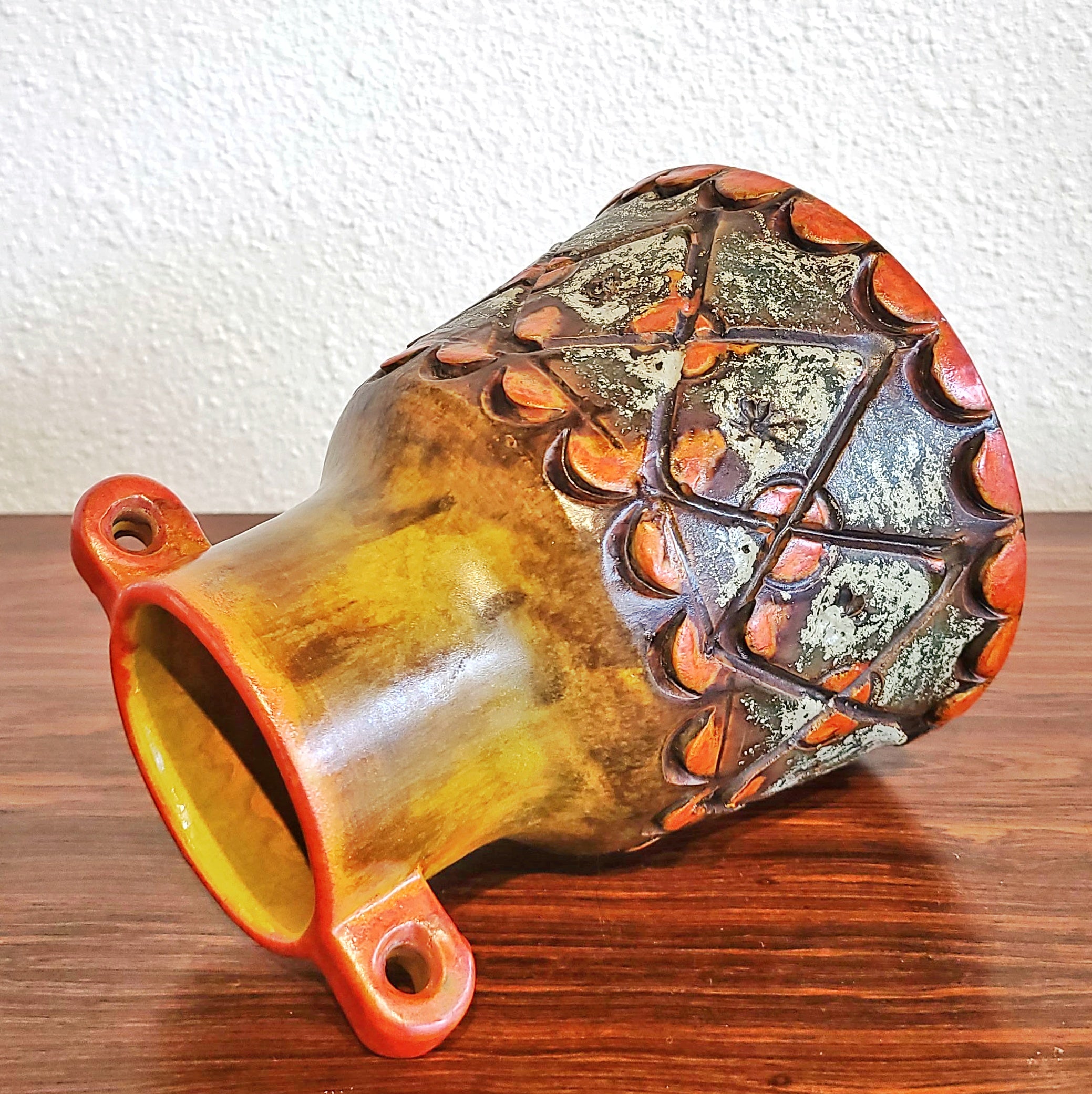
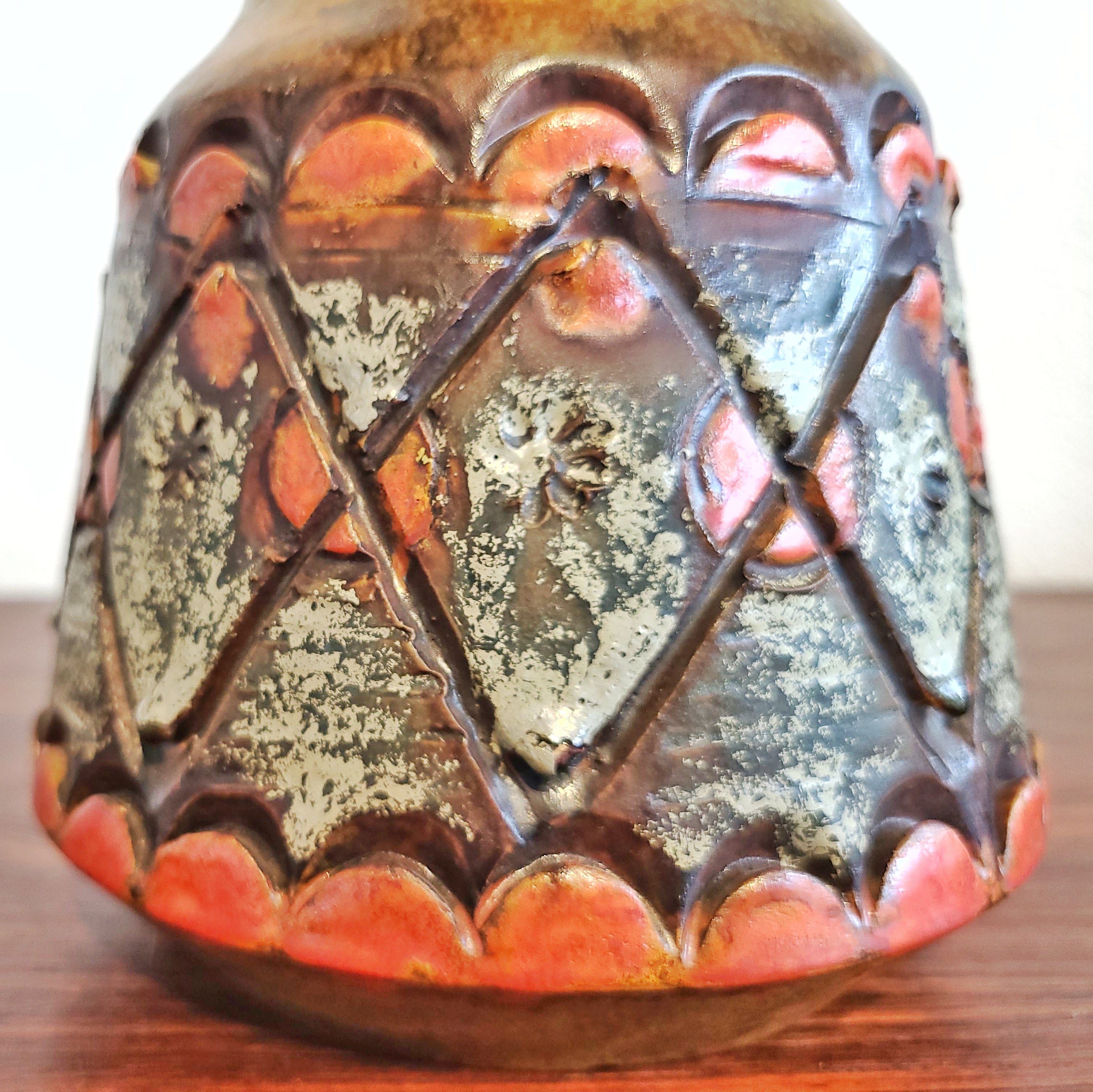
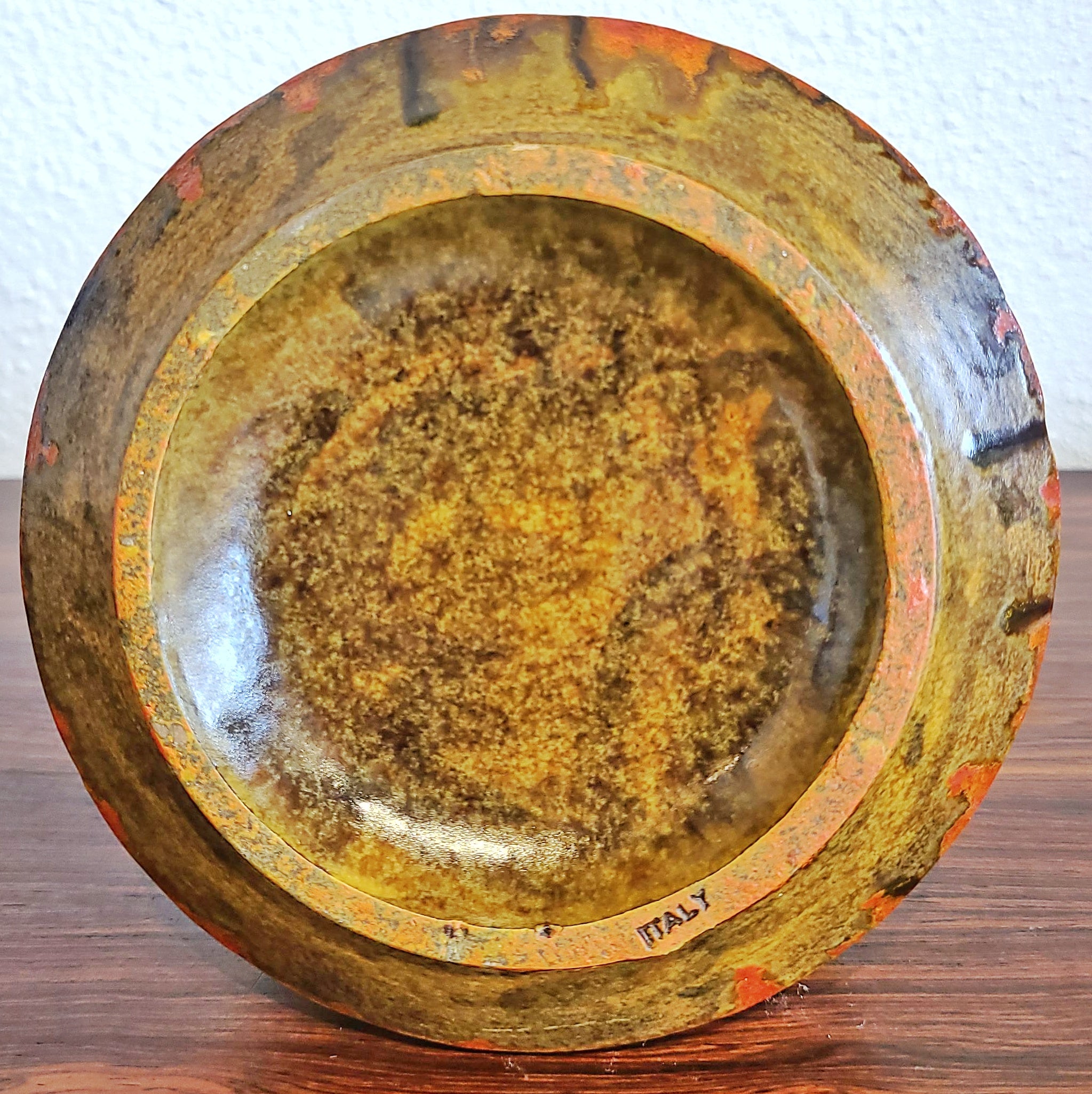
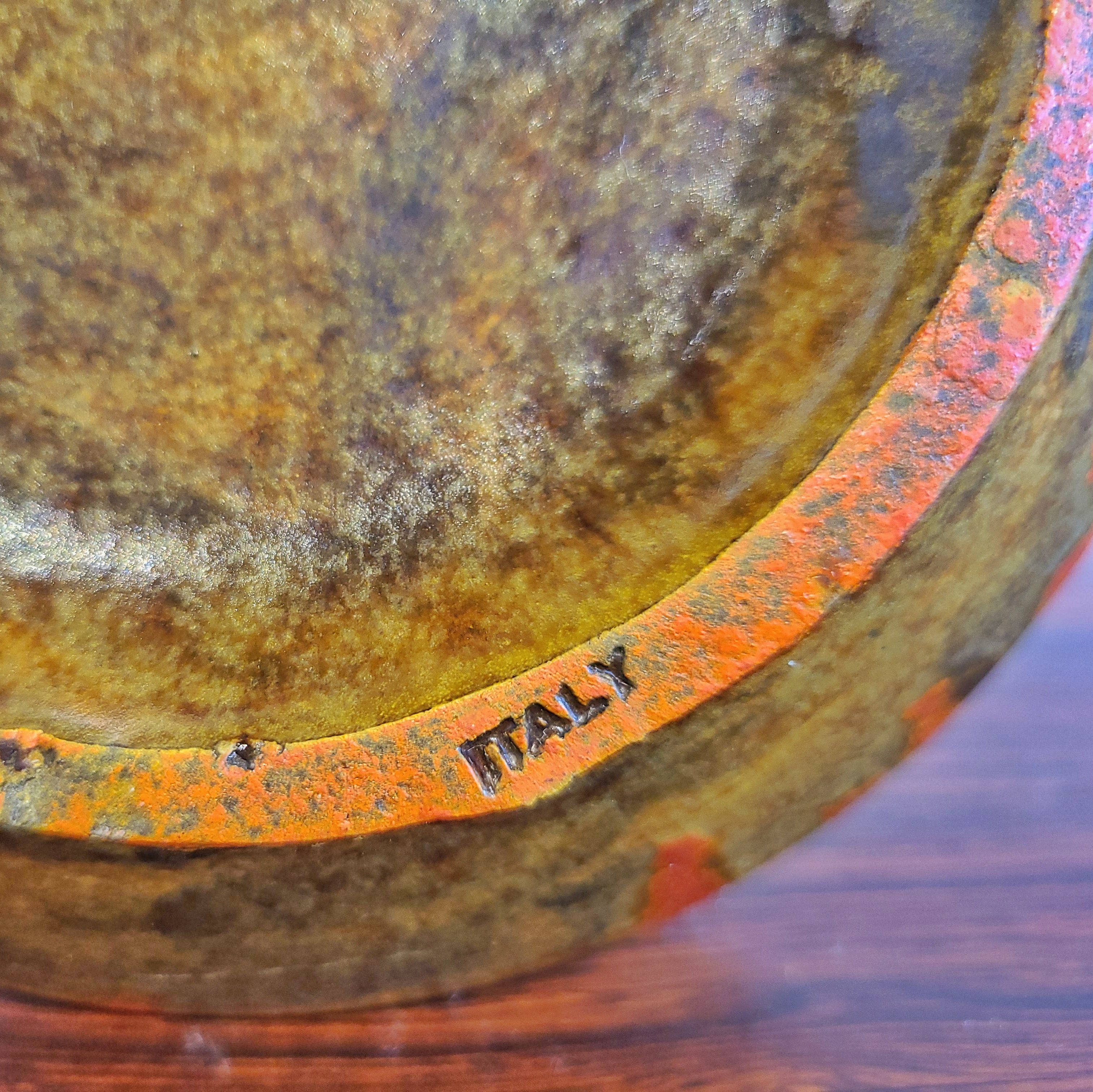
UNUSUAL ALVINO BAGNI ‘AUTUMN SUNSET’ VASE (ITALY)
CONTACT US HERE ABOUT THIS ITEM.
An unusual Alvino Bagni vase with sgraffito diamonds and dots in a variation of his 'Autumn Sunset' glaze. It has pierced 'ears' that would normally be outfitted with two iron rings, but it appears that this vase was produced without them. It also looks like it has never been used, as it is in pristine condition inside and out. Bagni's typical 'ITALY' stamp is on the foot of the vase
ALVINO BAGNI was born in 1919 in Lastra a Signa in the environs of Florence. His boyhood and adolescence were spent without his father; as a communist, he had been exiled under Italian fascism. The young Bagni learned the basics of drawing and clay modeling under the tutelage of artist/sculptor Torello Santini. Bagni's interest in ceramics—a locally important industry—grew, and he found work at Arnaldo Pugi’s furnace in Ponte a Signa. Following WWII, Pugi helped him finance the opening of his own studio, BAGNI CERAMICHE, where several family members including wife Gina were employed. Gina would work along side Bagni throughout his career. 3,500 elephant-head plates bearing the slogan “I like Ike” were manufactured for export during Eisenhower's 1952 US presidential campaign—an early and prophetic commission: the large majority of Bagni’s work would be for the US market.
In the 1950s and '60s Bagni established fundamental collaborations with Bitossi Ceramiche in nearby Montelupo Fiorentino and with the import companies Rosenthal Netter and Raymor, the latter being a dominant American firm. These relationships allowed Bagni to open a larger, better-equipped factory where he was able to surround himself with highly skilled artists—Enzo Borgini, M. Mannori, Remo Buti, and Michelangelo Santonocito among them. Bagni produced a stunning variety of designs for Raymor, including some highly individualistic studio work. He was always experimenting with glazes and produced some truly radical combinations and colors schemes. A case in point is the 'Sea Garden' décor, an unusual mix of turquoise, blue, green, yellow, brown, and black. Bagni often incorporated metal rings or other pieces with his ceramic designs.
By 1980 BAGNI CERAMICHE had almost 100 employees and was internationally renowned for high-quality, artistic production and the use of innovative techniques. However, as the world increasingly opened up to global competition, the company found itself in financial straits. Tied as it was to an “artisanal” approach, it struggled to withstand the downward pressure on prices. Despite Bagni's noble efforts to save his factory and employees, BAGNI CERAMICHE closed for good in 1990.
Bagni returned to pottery with Nuove Forme, a venture founded with son-in-law Gianfranco Ghiretti in 1993. A natural evolution of his older company, Nuove Forme continued to research and experiment with colors and processes. It found its niche producing limited runs of virtually unique objects for the most discerning of buyers. Nuove Forme owns many of Bagni's historical designs and curates an enormous Bagni showroom—something of a museum of his work. Bagni retired for health reasons in 2001. He died in 2009 at age 90.
| Designer | ALVINO BAGNI |
|---|---|
| Manufacturer | ALVINO BAGNI |
| Design Period | 1960 to 1969 |
| Production Period | Unknown |
| Country of Manufacture | Italy |
| Identifying Marks | This piece has been attributed based on archival documentation, such as vintage catalogs, designer records, or other literature sources |
| Style | Vintage, Mid-Century, Italian Modern, Modernist |
| Detailed Condition | Excellent — This vintage piece is in near original condition. It may show minimal traces of use and/or have slight restorations. |
| Product Code | |
| Materials | Ceramic |
| Color | Orange, goldenrod, white |
| Width | 6.0 inch |
| Depth | 6.0 inch |
| Height | 7.3 inch |

